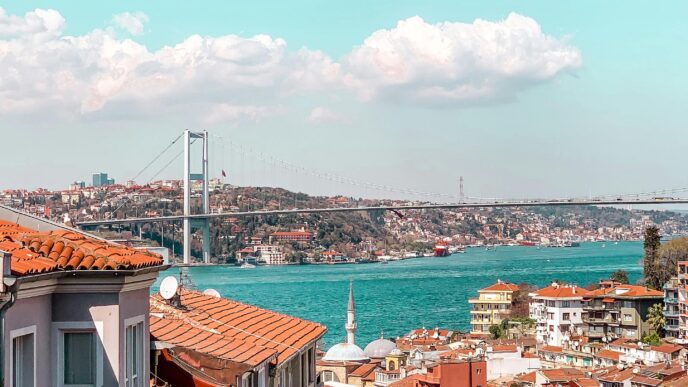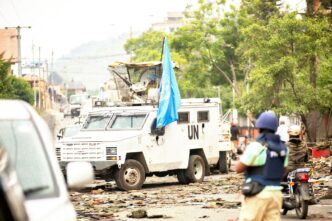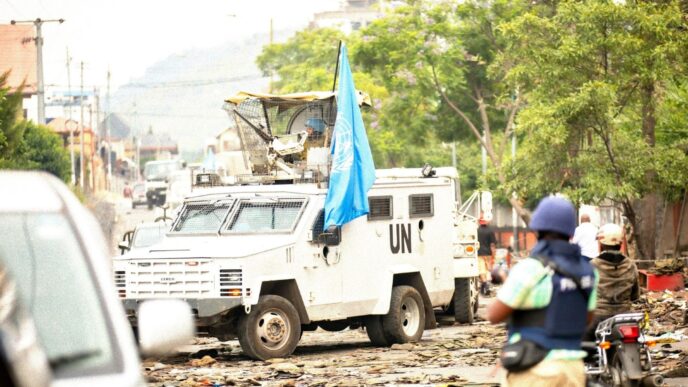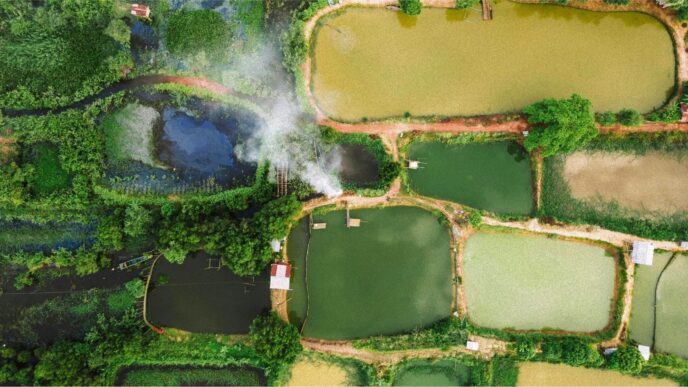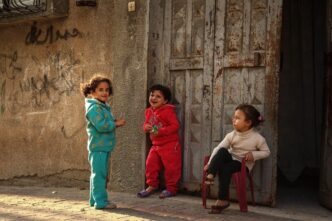In theory, humanitarian corridors are supposed to provide a lifeline, a safe passage for civilians to escape conflict zones and for aid to reach those trapped in war. They are established under international humanitarian law, endorsed by treaties such as the Geneva Conventions, and facilitated by organizations like the United Nations (UN), International Committee of the Red Cross (ICRC), and humanitarian NGOs.
Yet, in modern warfare, humanitarian corridors are rarely just about aid. Instead, they have become a bargaining chip, a political tool, and sometimes, a means of control and coercion. From Syria to Ukraine, Gaza to Yemen, access to food, medicine, and safety is dictated by those in power, rather than by humanitarian urgency.
Civilians who should be protected under international law are often forced to negotiate their survival trapped between warring factions, dependent on agreements that can be revoked at any moment. Who decides which humanitarian corridors open, and who gets to use them? Who controls access to aid convoys? And in conflicts where starvation is weaponized, do these corridors serve as a solution—or as another tool of war?
To understand the harsh realities of humanitarian corridors, we must look beyond legal definitions and examine how they are used, manipulated, and sometimes weaponised in modern conflicts.
How Humanitarian Corridors Are Supposed to Work?
In its purest form, a humanitarian corridor is meant to be a neutral, demilitarised route allowing civilians to evacuate and aid to enter conflict zones. It is established through negotiations between warring parties, facilitated by international actors like the UN, ICRC, or neutral states.
These corridors are rooted in international humanitarian law, particularly:
- The Geneva Conventions (1949): Mandating the protection of civilians and access to humanitarian aid.
- UN Security Council Resolutions: Establishing aid corridors in specific conflicts (e.g., Syria, Ukraine).
- ICRC Guidelines: Ensuring aid access and the safety of medical personnel.
However, despite these legal frameworks, humanitarian corridors rarely function as intended. They depend entirely on the willingness of those in power to allow them and in most cases, that willingness is dictated by political, military, and strategic interests rather than humanitarian needs.
The Reality: How Humanitarian Corridors Are Controlled, Manipulated, or Denied
The difference between the theory of humanitarian corridors and their reality on the ground is often stark. In most modern conflicts, these corridors are not neutral—they are tightly controlled by governments, militaries, or rebel factions. Access is granted selectively, and often, these corridors serve as much a political purpose as a humanitarian one.
Syria: A Case Study in the Politics of Aid
The Syrian civil war is one of the most blatant examples of how humanitarian corridors are manipulated. Since 2011, the Syrian regime, opposition forces, and international actors have weaponized aid access as a tool of control.
- In besieged areas like Eastern Ghouta and Aleppo, humanitarian corridors were offered but only under conditions that forced mass displacement. Civilians had to choose between staying under siege or being forcibly relocated to government-controlled zones.
- The UN Security Council repeatedly debated aid access, but Russia and China vetoed multiple resolutions that would have allowed independent humanitarian corridors in opposition-held areas.
- Aid convoys were deliberately delayed or denied access, forcing starving civilians to surrender to regime forces.
In Syria, humanitarian corridors were not a means of protection—they were a means of conquest.
Gaza: Blockades, Aid Control, and Starvation as a Weapon
Nowhere is the politicisation of aid more evident than in Gaza, where humanitarian access is dictated entirely by Israeli military control.
- The Gaza blockade, in place since 2007, has severely restricted food, medical supplies, and reconstruction materials.
- Humanitarian corridors are opened or closed at Israel’s discretion, often as part of ceasefire negotiations or diplomatic agreements.
- During military escalations, Israel has restricted fuel, electricity, and medical supplies, leaving hospitals unable to function and civilians trapped.
In such cases, humanitarian corridors are not designed to protect civilians, but to exert political and military pressure.
Ukraine: A Selective Approach to Aid Access
In Ukraine, the contrast in how humanitarian corridors were treated compared to conflicts in the Muslim world is telling. The UN Security Council quickly moved to establish aid access after Russia’s invasion, with strong Western backing. Unlike in Syria or Palestine, where aid access is routinely blocked by veto power, Ukraine saw a much more coordinated and efficient response.
While this does not diminish the suffering of Ukrainian civilians, it raises the question of why some humanitarian crises are prioritized while others are ignored.
Who Controls Aid? The Politics of Humanitarian Access
The reality is that humanitarian access is rarely neutral. Governments, rebel groups, and international powers all manipulate aid distribution to serve their own interests.
- Governments use checkpoints and bureaucratic delays to control aid. (e.g., Yemen, Syria)
- Rebel groups demand bribes or take control of aid deliveries. (e.g., Somalia, Sudan)
- International actors use sanctions to limit aid access. (e.g., Afghanistan, Iran)
This means that who receives aid—and who doesn’t—is often a matter of political alignment rather than humanitarian need.
The Weaponisation of Aid: Starvation as a Tool of War
One of the most insidious uses of humanitarian corridors is when they are used as part of a broader strategy to starve populations into submission. This tactic has been used in:
- Syria, where besieged areas were denied food until surrender.
- Yemen, where the Saudi-led blockade restricted food and medical supplies.
- Gaza, where Israel has restricted aid deliveries as part of its blockade.
This practice violates international law—yet, because those responsible are often powerful states or their allies, accountability is rare.
The Role of Diplomacy and the UN Security Council: Who Decides Which Lives Matter?
Ultimately, which humanitarian corridors are opened—and which are ignored—is decided at the highest levels of global diplomacy. The UN Security Council, dominated by the five permanent members (US, UK, France, China, and Russia), controls resolutions on aid access.
- The US routinely vetoes resolutions critical of Israel, preventing aid access to Palestine.
- Russia and China block resolutions on Syria, ensuring the Assad regime retains control over humanitarian corridors.
- Western nations prioritize aid access in conflicts that align with their strategic interests (e.g., Ukraine) while ignoring others (e.g., Yemen, Afghanistan).
This politicization of aid means that humanitarian corridors are not just a tool for saving lives—they are also a tool for advancing geopolitical interests.
The Future of Humanitarian Corridors: Can We Make Aid Truly Neutral?
Given the reality of aid being weaponized, is it possible to create truly neutral humanitarian corridors? Some potential solutions include:
- Independent enforcement mechanisms, where corridors are monitored by neutral parties like the ICRC rather than governments.
- Strengthening international laws to hold those who block aid accountable.
- Decentralized aid delivery, using drones or underground networks to bypass state control.
However, as long as humanitarian aid remains entangled in politics, true neutrality will remain elusive.
Conclusion: A System Built on Power, Not Humanity
Humanitarian corridors are supposed to be about saving lives—but in modern warfare, they have become instruments of control, bargaining, and oppression.
The world’s most powerful nations decide which conflicts receive aid, and which populations are left to starve. Meanwhile, civilians remain trapped in a system where survival is dictated not by need, but by politics.
If the concept of humanitarian corridors is to mean anything, it must be reclaimed from the hands of power and placed back into the realm of true humanitarianism. Until then, for millions of people in warzones, survival will continue to be a negotiation—not a right.



